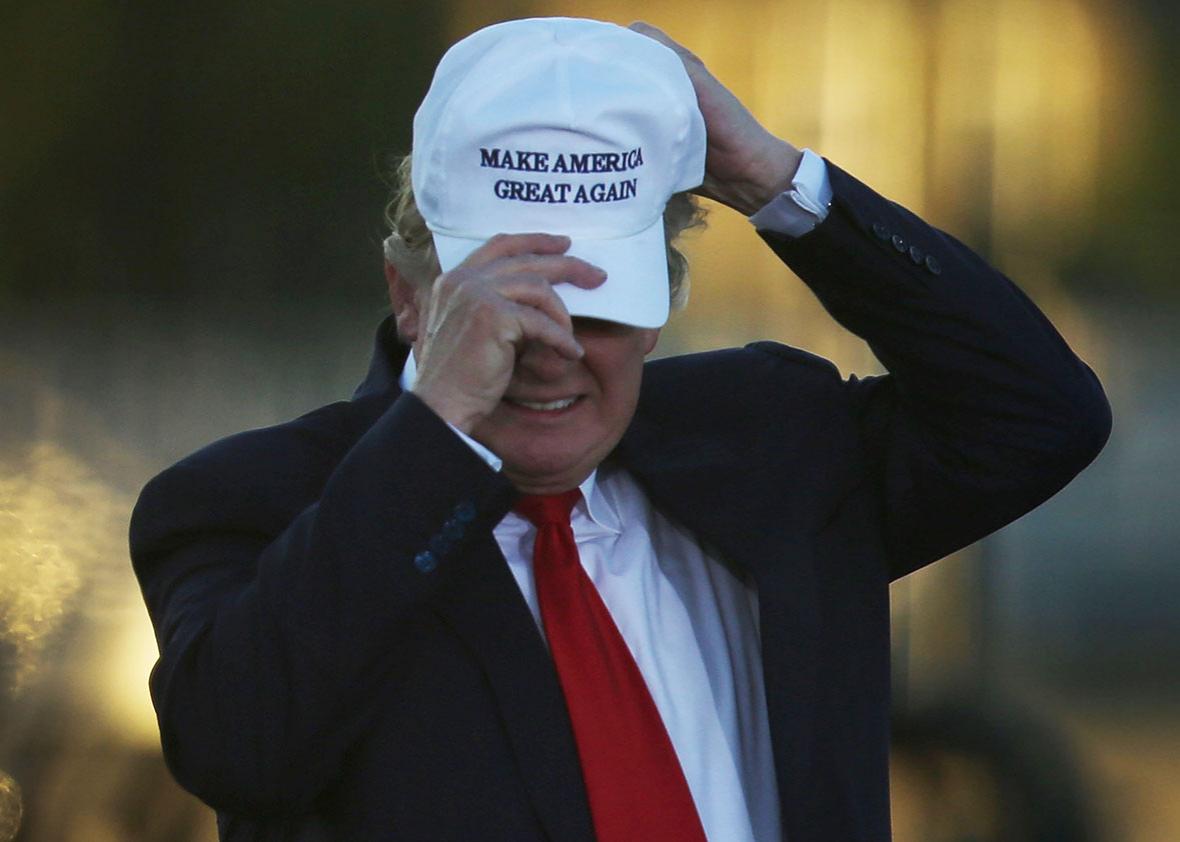Donald Trump’s campaign for president was distinctive for one big reason beyond its embrace of explicit racism. Trump ran as a Republican, but he didn’t run as an ideological conservative. Rather than a retread of Reaganism, what most voters heard from his campaign was a promise to “take care” of ordinary Americans. Trump wouldn’t just save and create jobs; he would protect Social Security and Medicare—key programs for his older and elderly base—fund mental health services for veterans, and replace Obamacare with “something terrific.” And when pressed about his plans for heath reform during the campaign, he pledged to “take care of people that can’t take care of themselves.”
You can’t untangle this populism from the racism. Trump’s message had two pillars: He would create room for jobs and benefits for working-class Americans by removing the “illegals” who—in his narrative—abused and exploited our economy and social safety net. And he would care for and protect those same ordinary Americans by providing government assistance. This blend of ethno-nationalism and redistribution was potent, delivering a large enough majority among white Americans to secure a narrow Electoral College victory.
Now, with his upcoming budget, Trump plans to deliver. Indeed, his plans for spending are the flip side of his initial executive orders on immigration and policing. If the latter turned federal law enforcement decisively against Muslims, immigrants, and other perceived intruders, then the former will reshape the welfare state to benefit Trump’s favored Americans to the exclusion of younger, browner citizens. If the chief symbol of the Trump administration is “the wall,” then you can treat his plans for the budget as another kind of barrier, one for blocking the “wrong” Americans from enjoying federal largess.
On Monday, the White House delivered an outline for its priorities on federal spending. At its center is a $54 billion increase in defense spending. To further sweeten the pot for conservatives, Trump envisions a major upper-income tax decrease. And for the older and retired whites who gave him his victory, Trump preserves current spending on retirement programs such as Social Security and Medicare. Everything else falls on the chopping block. To pay for his military expansion, for instance, Trump wants equivalent cuts to spending on domestic programs such as food stamps, housing assistance, Medicaid, and other programs that benefit low-income families and individuals.
On its face, this looks self-defeating. If implemented, these cuts will harm those working-class whites, some of whom backed Trump in the election, who utilize safety net programs. But those voters didn’t make up the core of his electoral victory. That status, again, belongs to the older whites and white retirees who delivered Trump’s winning margins in the Rust Belt and around the country. They are the main beneficiaries of federal retirement programs, versus the younger Americans and nonwhites who benefit disproportionately from Medicaid, Temporary Assistance for Needy Families, the Supplemental Nutrition Assistance Program, the Children’s Health Insurance Program, and the Affordable Care Act.
As such, it’s no surprise that Trump’s plans would secure federal support for the former while slashing the latter. Yes, support for Social Security and Medicare in their present forms is a rebuke to conservative orthodoxy and a challenge to House Speaker Paul Ryan, who has built his career around the white whale of deep cuts to New Deal and Great Society programs. But Trump and his brain trust are less interested in fulfilling the commandments of the libertarian catechism and more concerned with advancing their ethno-nationalist vision of the United States. In which case, the obvious choice is to protect the hundreds of billions of dollars that flow to the oldest and whitest segments of the population, while slashing the smaller sums that increasingly go to groups on the other side of the demographic divide.
That’s no exaggeration. According to data from the Census Bureau and the Pew Research Center, the oldest Americans are also the whitest Americans: 72 percent of baby boomers and 78 percent of people in the silent generation are white. Together, they are 33 percent of the total population. By contrast, just 57 percent of millennials and 61 percent of generation Xers are white. And in general, as America becomes younger, the population becomes browner. You can understand the Trump presidency as an effort to build a demographic, political, and cultural barrier that protects the priorities and prerogatives of this older generation while rejecting those of the younger one, deporting and removing immigrants, imposing new restrictions on voting that fall heaviest on nonwhites, and slashing benefits for everyone outside the in-group. This isn’t unique to Trump—Mitt Romney ran on large cuts to domestic spending that would protect retirement programs for current recipients, and George W. Bush signed a large new entitlement for the elderly in the form of Medicare Part D—but Trump has brought it to its logical conclusion, making the cause explicit with a campaign of white identity and white hegemony.
All but the most ideological conservatives are likely to follow Trump down this path toward white welfare gerontocracy. It’s both the culmination of a long trend in Republican politics and a reflection of how much Trump has shaped the GOP around his aims. But even if that weren’t true, conservatives would still follow along. With his promise of benefits for the white deserving and punishment for the nonwhite undeserving, Trump recaptured the White House and provided Republicans a chance to shape American government for a generation and diminish, if not destroy, the legacy of Barack Obama. There is a reason conservative activists cheered the decidedly unconservative Trump when he appeared last week at their annual conference for a speech. He is their president. He has given them power. And if that means a full turn toward the white nationalism that defines his administration, they’ll embrace that too.
